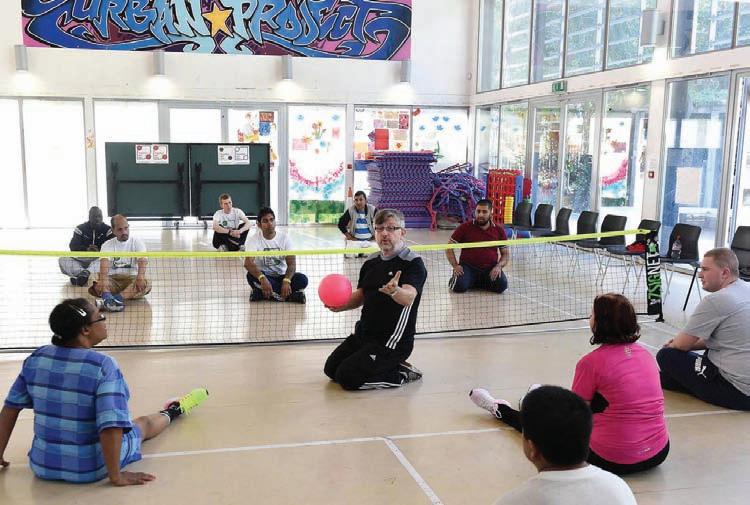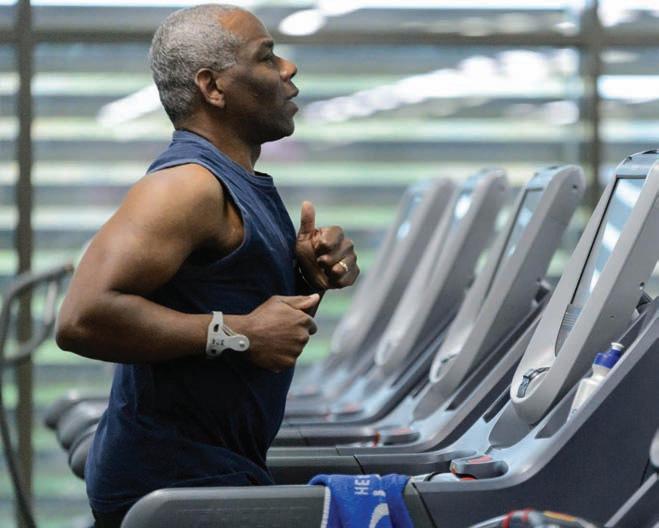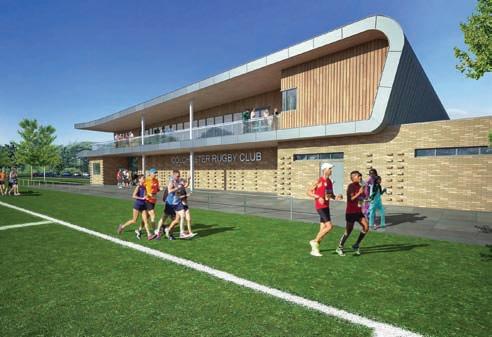
5 minute read
Sports Management insight
AM2 AM2
AM AM
sb sb
HCM HCM
Barry Horne, CEO, Activity Alliance

CLAD CLAD so so EQUAL OPPORTUNITIES A new study has revealed that four in five disabled people want to be more physically active – but feel that their needs aren't catered for
LM LM o lo leisure opportunities leisure opportunities F our in five (81 per cent) disabled people want to be more physically active – but are unable to, as the demand for their needs is not being met by operators. The figure comes from the latest Annual Disability and Activity Survey, published by the Activity Alliance, which offers an in-depth comparison of disabled and non-disabled adults’ experiences of sport and activity. Less than half (40 per cent) of disabled people feel they are given the opportunities they need to be active, compared to 71 per cent of non-disabled people. Meanwhile, less than a third of disabled people (32 per cent) agree that organised sport is for someone like them – compared to 63 per cent of nondisabled thinking the same.
The revelations come after fi gures from Sport England revealed that disabled

■The report's recommendations include a call for the sports sector to challenge perceptions through inclusive and accessible communications people are twice as likely to be inactive as those without impairments.
To tackle the issues, the report makes three recommendations for sport, health and other sectors to work towards. These are to address the wider determinants of inactivity, to design and lead a choice of accessible activities and to challenge perceptions through inclusive and accessible communications.
“For the fi rst time, we are able to compare perceptions and experiences of disabled people to non-disabled people," said Barry Horne, CEO for Activity Alliance. "This is a fi rst new step in gathering a snapshot of real life for a huge number of people in our population.
“We want to achieve fairness for disabled people in sport and activity, a position where disabled people are as active as non-disabled people. The fi ndings provide robust insight to Activity
■■Less than a third of disabled people (32 per cent) agree that organised sport is for someone like them

Alliance and our partners. This report will be key to helping us – as well as others – to begin changing the reality of disability, inclusion and sport.”
Tim Hollingsworth, CEO of Sport England, added: “At Sport England we are all too aware that there’s an unacceptably high gap in activity levels between disabled and non-disabled people, and that despite a desire to be more active, many disabled people are missing out on the range of benefits that can be gained through physical activity. “Activity Alliance’s first Annual Survey increases our insight into this issue and throws down a challenge to all in the physical activity sector: to use this new understanding to make sure that far more disabled people can get physically active in a way that is right for them.
"It’s a challenge that personally I know we must take up.” l
■■ Less than half of disabled people feel they are given the opportunities they need to be active

AM2 AM2
AM AM
sb sb
HCM HCM

CLAD CLAD so so inClusiVe aCtiVities People from BAME backgrounds 'far less likely' to be physically active
lo leisure opportunities leisure opportunities
LM LM
■■The report is described as the most comprehensive ever picture of how people from BAME communities are taking part in sport and physical activity

people from Black, Asian and minority ethnic (BAME) backgrounds are still far less likely to be physically active – despite efforts to tackle the deep-rooted inequalities in activity levels. The issue has been laid bare in a new report, which also shows that BAME groups are also far less likely to volunteer in sport and enjoy the benefits associated with it.
The report, Sport for all - why ethnicity and culture matters in sport and physical activity, is described as the most comprehensive ever picture of how people from BAME communities are taking part in sport and physical activity. It has been drawn from the survey responses of more than 100,000 people who contributed to the most recent Active Lives Adult and Children Surveys. Published by Sport England, the report shows that, presently, 62 per cent of adults in England meet the
■■The report has been drawn from the survey responses of more than 100,000 people of all ages


Chief Medical Offi cer’s (CMO) guidelines of 150 minutes of physical activity a week.However, just 56 per cent of Black people and 55.1 per cent of Asian people (excluding Chinese) reach this fi gure. The diff erences in activity levels are even greater when looking at ethnic sub-groups.
According to the report, less than half of adults from a Pakistani (48.8 Per cent) and Bangladeshi (49.6 per cent) background currently meet the CMO guidelines. However, those from a "mixed" white and Asian background are the most active adults of all – with 74.6 per cent classed as physically active.
Speaking at a special conference to promote the research in Birmingham Sport England board member and former CEO of Sported Chris Grant said the results of the report show that it is vitally important to "work to close the ethnicity gap in sport participation".
■■There remains huge diff erences between activity levels between diff erent ethnicity groups

"I’m convinced that sport must be a leader, and not a follower," he said. "That’s why I want to invite and challenge the whole of sport to come with us on this journey, and in doing so to be clear-sighted and honest about the ways in which we’re currently excluding and letting down whole swathes of our population. "When it suits us, we’re happy to talk about the leadership role that sport can play; its capacity to inspire a nation or to transform lives. No other aspect of national life has so many column inches and broadcast hours devoted to it. But there’s an elevated level of discomfort when talking about race and culture in sport and we need to get beyond this." l






